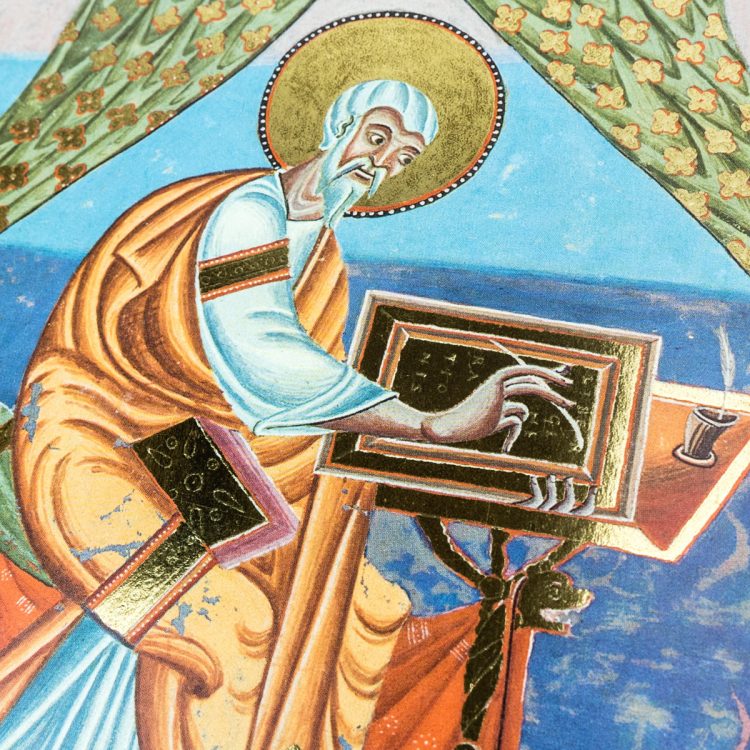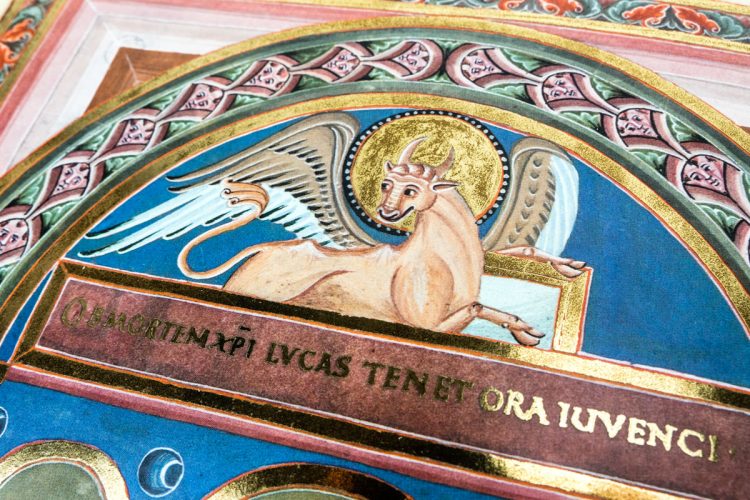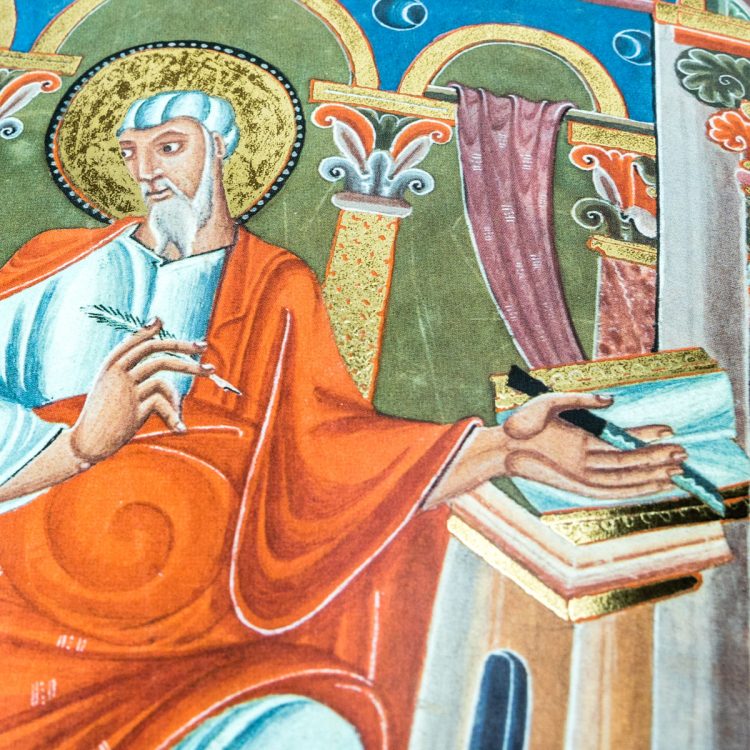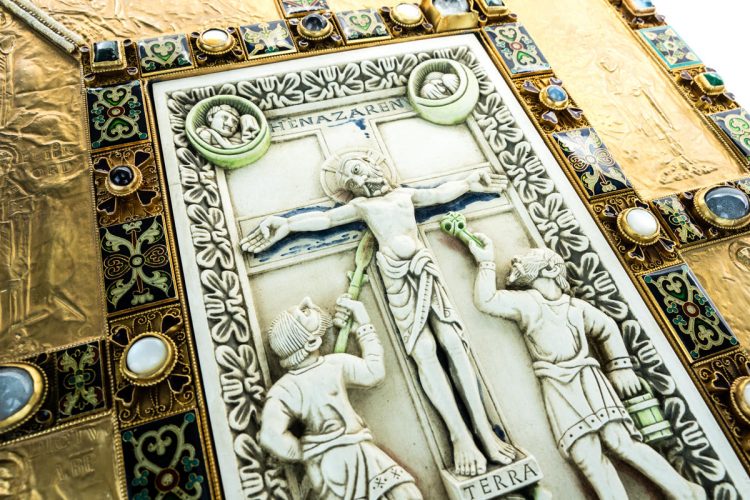With its 60 pages of illuminated art, and over 500 initials, the Codex Aureus of Echternach is a true gem of the Ottonian era. This Alumina article unveils its history.
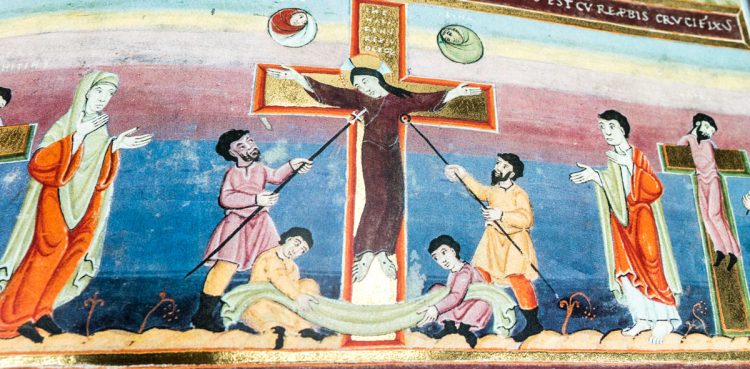
In the east of Luxemburg, bordering on the German state of Rhineland Palatinate, lies the small town of Echternach. Here, in the year 698, Bishop Willibrord (658-739) founded the imposing abbey which today houses his remains.
Initials decorated with a red border alternate with pictorial ones, sometimes in gold or silver, giving a total of over five hundred.
Under the abbacy of Humbert, which began in 1028, the coenoby reached the height of its splendor, especially as regards the scriptorium, the largest of its kind during the Salian Dynasty. It was here, in 1045, that one of the all-time masterpieces of illumination, the Codex Aureus Epternacensis, was produced, a sumptuous Evangelistary containing the entire text of the four Gospels.
This cornerstone of Germanic illumination was reproduced in facsimile in the 1980s by publisher Müller and Schindler and unveiled to public admiration in 2007 in the halls of the Germanisches Nationalmuseum in Nuremberg, where the manuscript is currently housed.
It is a parchment folio volume (445 × 310 mm) made up of 136 folios (17 quaternions) completely written in gold ink in a beautiful Carolingian minuscule hand, the small and lively letters placed perfectly on the line and attributable to at least two different copyists. Headings, incipit and explicit are in Roman square capitals, with a few uncial elements, and rustic capitals.
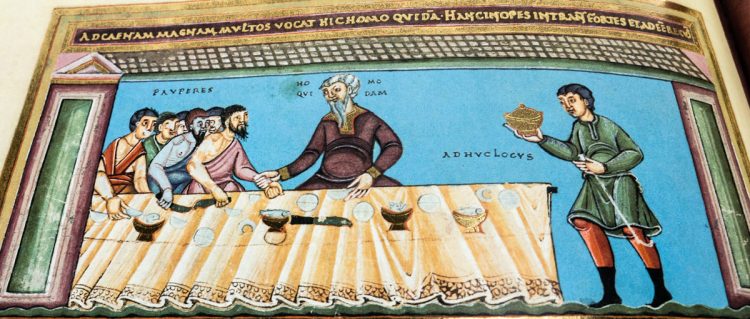
The manuscript remained at Echternach abbey until the end of the 19th century, when it was transferred to the Benedictine monastery of Petersberg at Erfurt. In 1801 the manuscript was bought by Duke Ernst II of Saxony-Gotha-Altenburg (1745-1804) and in 1955 it was sold to the Germanisches Nationalmuseum in Nuremberg, where it is catalogued with the pressmark Hs 156142, in order to make up for the huge losses from the war.
Text written by Federica Fabbri for Alumina — Pagine Miniate.
Subscribe to Alumina today!
Unlike many medieval manuscripts, the Codex Aureus of Echternach still bears its original cover, crafted about half a century earlier than the work it contains. The cover appears to have been made in Trier beween 985 and 987 bestowed by Empress Theophanu and her son Emperor Otto III.



